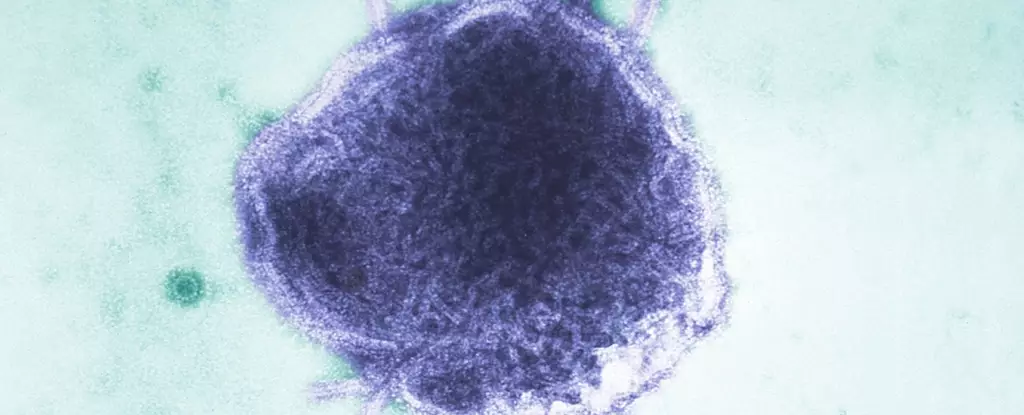Measles, once considered a disease largely eliminated from many regions, is experiencing an unsettling resurgence worldwide. The recent statistics underscore this troubling trend, indicating that North and South America have witnessed an alarming rise in cases—an elevenfold increase when compared to the previous year. Europe, too, has seen a spike, with measles rates reaching their highest levels in a quarter-century. As of May 2025, the United States recorded 935 confirmed cases affecting 30 states, a staggering jump from the mere 285 cases documented in 2024. This trend begs the question: how did we find ourselves at such a precarious juncture once again?
The implications of this resurgence extend beyond mere numbers—their potential human cost is profound. In Canada, the situation mirrors that of the U.S., with over 1,000 cases reported, prompting health authorities to reassess their strategies for vaccination and public health outreach. The World Health Organization’s declaration of both North and South America as high-risk for measles accentuates the urgency of the situation. As complacency creeps in following a period without widespread outbreaks, public health advocates must galvanize communities to recognize the imminent dangers measles poses.
The Historical Context: Lessons Unlearned
To truly understand the gravity of the current measles crisis, one must reflect on the historical context surrounding the disease. Once a ubiquitous presence in American life, measles was a national concern with millions of cases reported annually. Medical advancements, particularly the introduction of the vaccine—first released in the 1960s and later as part of the MMR (measles, mumps, rubella) regimen—ushered in an era of declining rates. By 2000, the U.S. celebrated the elimination of measles, relegating the disease to the annals of history.
However, this narrative has begun to unravel. In the years following the vaccine’s introduction, particularly since 2010, isolated outbreaks in unvaccinated communities have illustrated a dangerous lapse in immunization coverage. The decline in vaccination rates due to misinformation and vaccine hesitancy—exacerbated during the COVID-19 pandemic—has amplified the risk of resurgence. The decrease in public trust in vaccinations, not rooted in empirical evidence, spores an environment where diseases like measles can thrive again.
The Mechanism of Measles Transmission and Community Responsibility
Understanding measles extends beyond statistics; it is crucial to grasp its transmission dynamics. Notoriously infectious, the measles virus can be spread from one infected individual to as many as 18 others, which sets the stage for rapid outbreaks in under-vaccinated communities. Current epidemiological models suggest that for herd immunity to function effectively, at least 95% of the population must be vaccinated.
This raises an important socio-economic discussion: Why are vaccination rates dropping? Addressing community barriers to immunization is essential in reversing this trend. Factors range from healthcare accessibility and socioeconomic disparities to vaccine myths gaining traction in media and social discussions. For effective public health messaging, health officials and communities must engage in proactive dialogue that confronts fears and misconceptions surrounding vaccinations.
The Impacts of Declining Vaccination Rates
The risks associated with low vaccination coverage are no longer hypothetical; they are manifesting in real-world outcomes. An alarming study modeled the trajectory of U.S. measles cases, concluding that millions of children could be left vulnerable without prompt catch-up vaccinations. Experts project that if current hesitancy trends continue unchecked, the country may soon confront an epidemic, with an estimated 850,000 new cases over the next 25 years.
This potential becomes even graver when coupled with predictions that infection rates might spike to an astonishing 11 million should vaccine acceptance wane further. Public health responses must pivot towards ensuring continuous access to vaccinations, coupled with robust informational campaigns aimed at restoring trust in the vaccines that protect our children and communities.
Restoration of Public Trust and the Path Forward
To combat this concerning resurgence and reposition measles as a historical footnote rather than a present-day threat, communities must undertake a collective responsibility. This involves strategic policy interventions to bolster vaccination rates, alongside grassroots initiatives to connect with skeptics and educate families.
Public health officials should prioritize clear, transparent communication that not only addresses safety and effectiveness but also humanizes those affected by measles, shifting the narrative from impersonal statistics to the real human suffering behind the numbers. The urgency of vaccination cannot be overstated, as countless lives depend on this collective commitment to safeguard public health.


Leave a Reply